Brisa Noronha: EVERY FRAGILE BODY
Negotiating Materiality
Brisa Noronha tests the plasticity of her materials. Porcelain, brass wire, oil paint, tempera, dreams and sound are not subjected to a concept or form, but let loose with their wilful dynamics and turned into events. The artist, who also integrates photography and digital film, follows her chosen substances as she works them gently with her hands, leaving tools untouched on the margins. In this way she liberates the clay from the wheel and from serial production in moulds; the chosen substance becomes a material for sketching and experimenting. For Every Fragile Body she made constructs from white porcelain – a dense, non-porous mix of kaolin, feldspar and quartz – and soft brown-red-gold brass wire. Noronha extends bodily gestures into space, purposefully exploring the possibilities of her materials. Porcelain is not as earthy and fleshy as other clays, but it does record bodily imprints when it is moist and malleable. And so these dainty, seemingly fragile structures acquire material shape, composing groups or serial formations, sometimes still on the way to becoming. All the components are engaged in constant dialogue and negotiation with each other as they seek a literally delicate equilibrium that could tip over at any moment.
Conventional categorisations are thwarted and experimental hybrids emerge: some of the components seem to have been casually parked, creatures of the ground that almost disappear, while wire webs spin upwards into jaunty loops; a column-like formation towers to breathtaking height. Here gravity could be a decisive player, because the hard ground over which these fragile elements unfurl their balancing acts threatens to destroy the high jinks of these white elements upon impact. A different arrangement invokes industrial goods like vases, although they might equally be corals that have been growing organically for decades; there are things seeking intimacy, protecting or holding each other. In other places the risk of destruction looms large for discs suspended from the ceiling and hovering in space. Porcelain is slippery enough as a material as it is, continuing to spin after it has been shaped; it even continues to warp in the kiln. However, hot firing transforms it into a substance harder than concrete. And yet Brisa Noronha leaves her often thin-walled ceramics unglazed, so without a protective coating. Delicacy and resistance belong together, make each other possible, a fact associated by the artist with social spheres coded female. This aspect is reinforced by a sound installation – a loop with a droning base tone interrupted sporadically by a cutting of wire, a bursting of porcelain or a blazing kiln. In this way the production process is made present and the installation indicates that these materials might have a life of their own.
And this life can be so unspectacular. In the everyday sphere earth in general is taken for granted to such an extent that it makes little impression on our consciousness; in the urban space it appears on streets and squares on a daily basis in the form of dirt. But kaolin, white clay, and the things made from its composites, are historically linked to industry, class politics, global trade as well as colonialism. There were early examples in imperial China, where Marco Polo came across the material in the thirteenth century. From the sixteenth century onwards such articles were exported to Europe, where for a long time alchemists tried in vain to imitate the white gold until in 1708 an apothecary in Dresden managed to replicate the process. The substance reached Brazil on Portuguese ships during the early years of colonisation. But Brisa Noronha’s interest does not lie in the supposed purity repeatedly attributed to white porcelain in these historical contexts, nor with the costly ornamental porcelain manufactured for royal courts and noble houses as a surrogate for precious ivory, alabaster or white marble. The artist, who as part of her master’s degree in Visual Arts conducted research in collaboration with the Institute of Physics, University of São Paulo, where scientists studied sonochemical reactions, is an alchemist too, who listens to her materials and builds her own athanor. The clues are in the ceramic structures resembling tripods, bulbous or rod-like painted forms, and in the sound track with its hum of electrical voltage, the switching on and off of the kiln. But she is not making bullion or the philosopher’s stone, nor is she transmuting objects into light. In her art practice things open up to each other, compose clusters which spread, a complex weave of relationships. In this sense, paintings of oil and tempera on wood, primed with rabbit skin glue and gesso, serve as an inter-material reflection. Their impact derives from their muddy pastel shades, pigments mixed with titanium white, like applications of porcelain glaze: these pictures ‒ allusions to dreams, memories, or to photographs from the artist’s collection, sometimes with opaque elements, sometimes with obvious traces of brushwork that let the ground shimmer through like pâte sur pâte ‒ take as their motifs everyday domestic utensils and place them in spatial situations. In these seemingly surreal tableaux, gravity is suspended, candlesticks become graphic abstracts, mutate into flowers or spread out to form trees or tents. None of these things are decorative. This is an exploration of systems that sustain life and it defines the artist’s whole work. But just like white clay, layers of paint can turn transparent: things threaten to fade, go missing or play tricks. Like in a musical composition, or in the chaos of evolution, there are series and variations to try out, things proliferate, something almost happens, structures take shape or implode. This artistic life, however, holds many risks. Noronha’s materials – as well as her natura morta paintings – have taught the artist lessons about physical limits. Porcelain can wear too thin and crumble or collapse like porous bone. Kaolin, especially a product of weathering feldspar, reminds us that clay is a cache for things past and remnants of civilisations. Besides, all our fragile bodies will return to dust, earth and clay. But that need not be a cause for grieving. In Germany, it is an old custom that before a wedding people gather at the Polterabend to smash their porcelain collectively. Through this ritual the revellers express their hope that together the bride and groom will pull through difficult times. The crashing din drives out demons, brings good luck and symbolises the start of a new life.
Petra Lange-Berndt
Translation: Kate Vanovitch


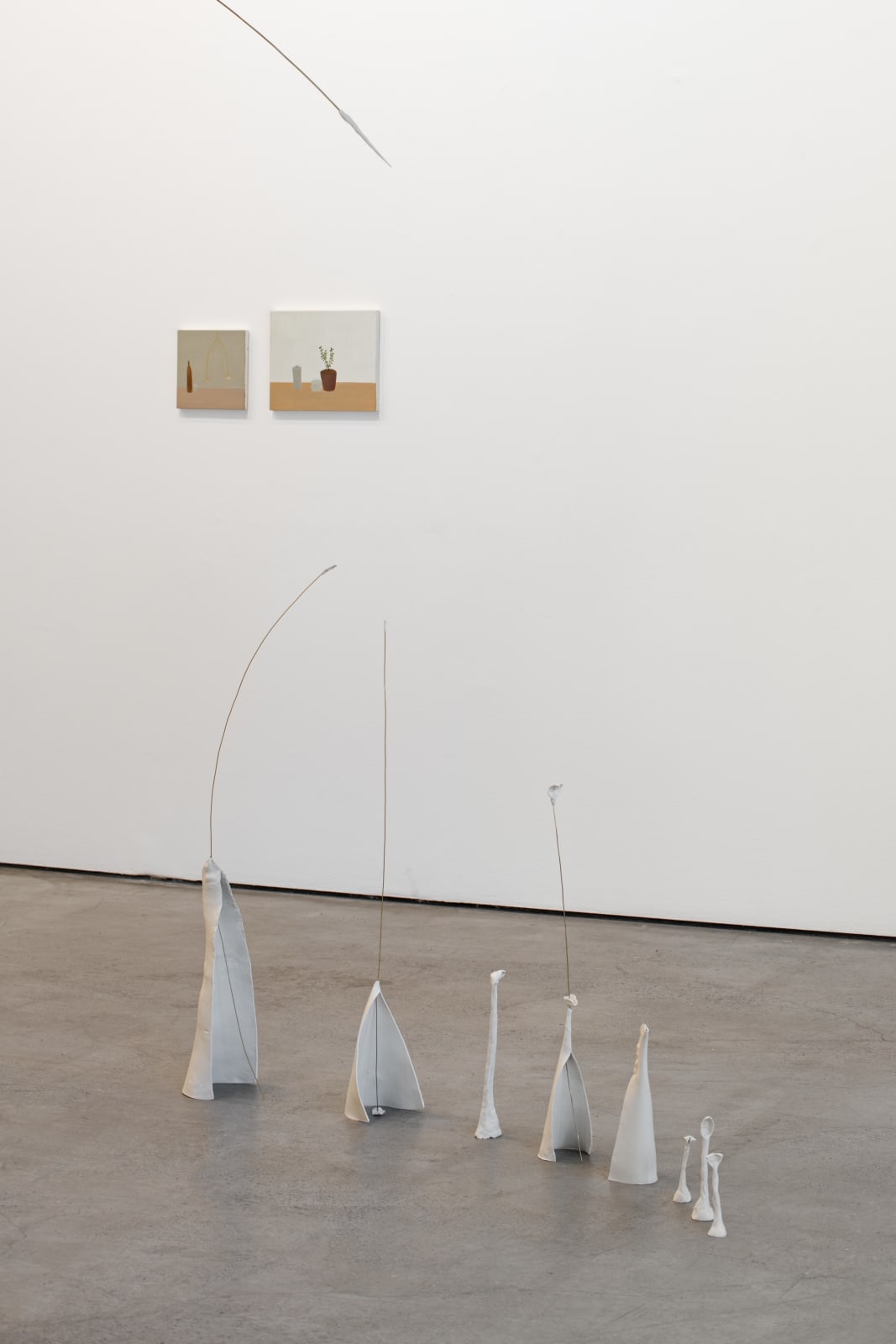

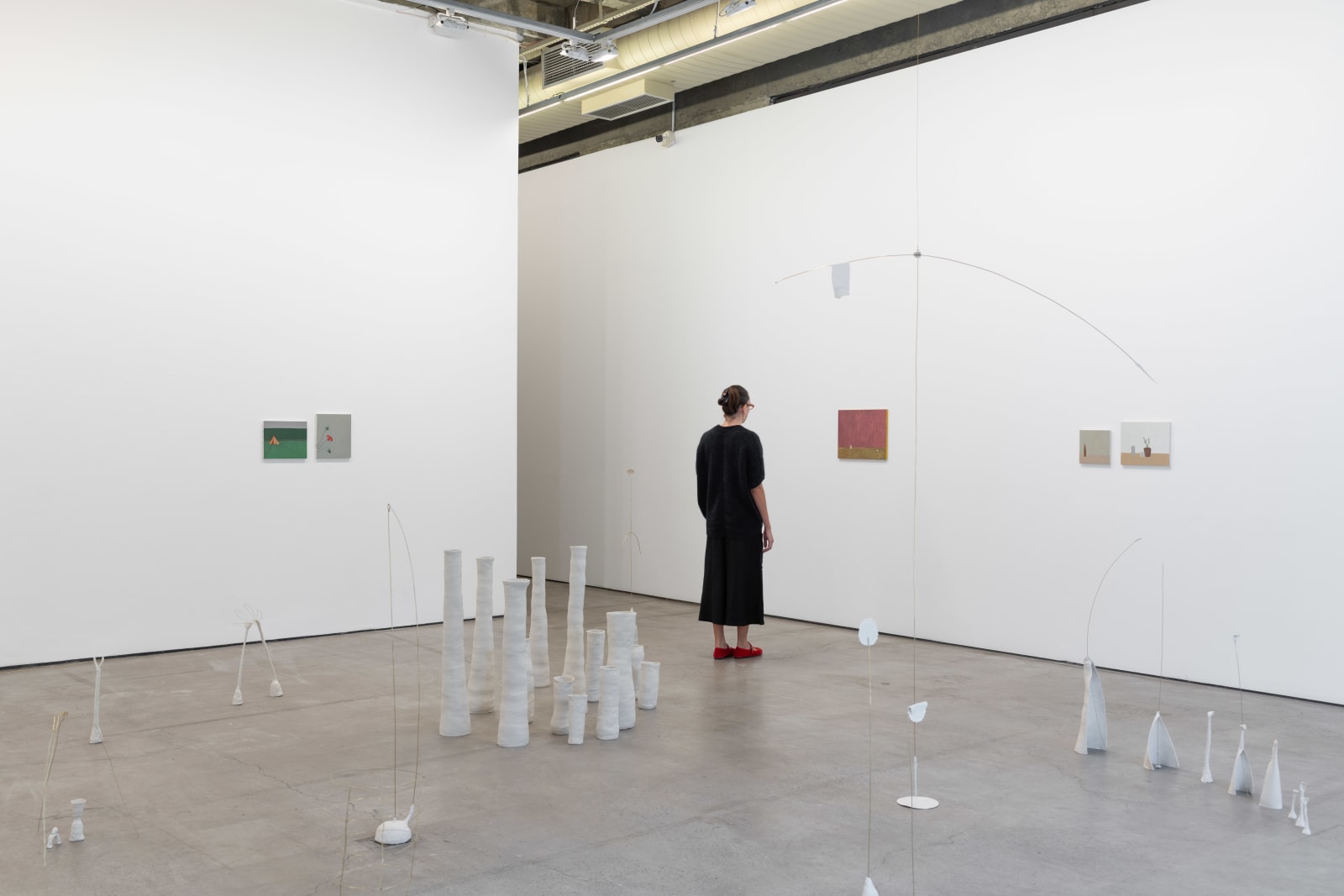


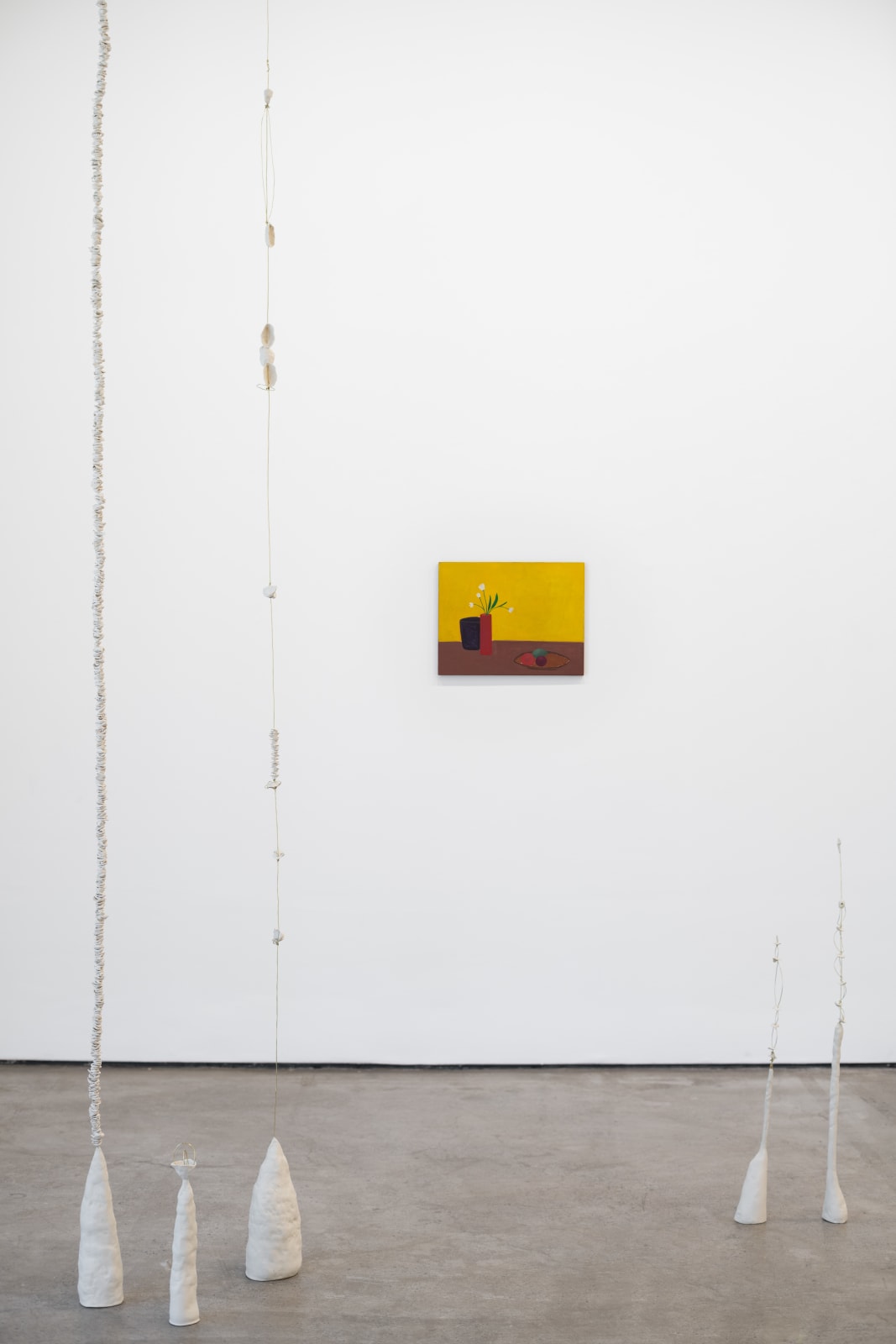
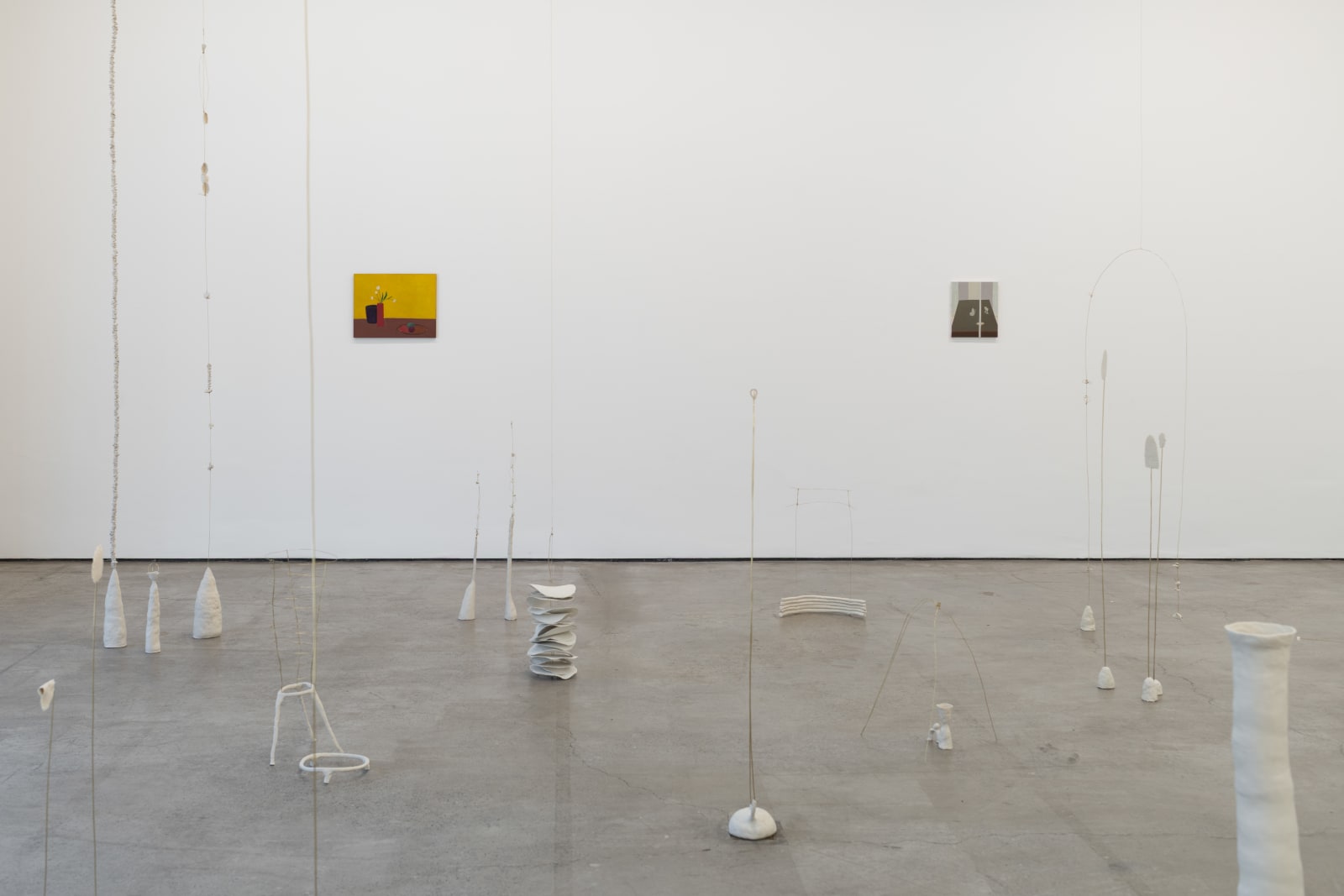

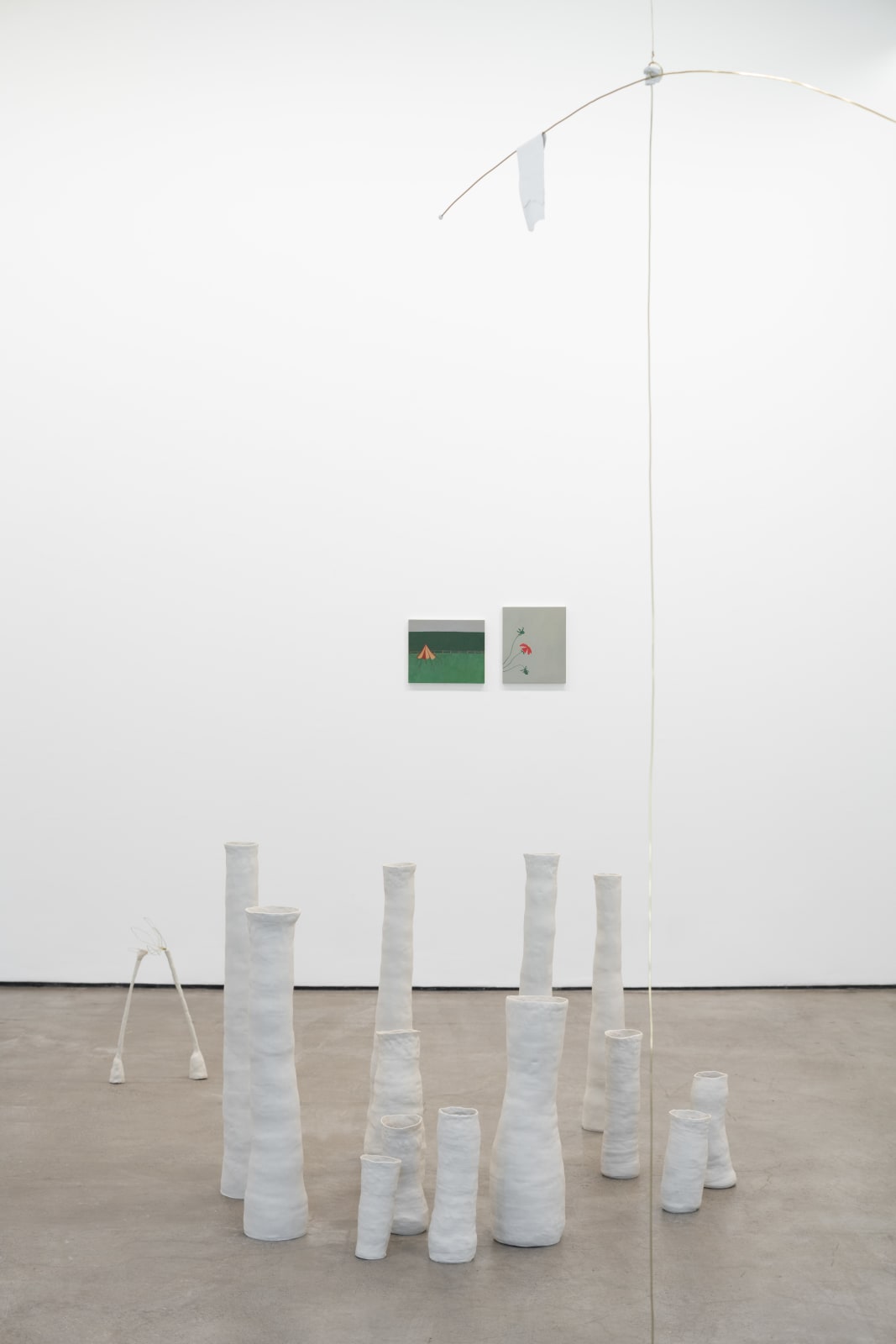
![Brisa Noronha Realismo inventado, 2025 óleo sobre madeira [oil on wood] 30 x 25 x 1.8 cm 11 3/4 x 9 7/8 x 3/4 in](https://artlogic-res.cloudinary.com/w_600,c_limit,f_auto,fl_lossy,q_auto/artlogicstorage/galerialuisastrina/images/view/0e7cc4d901bc52b531c2b824e1345ad3j/luisastrina-brisa-noronha-realismo-inventado-2025.jpg)
![Brisa Noronha Lua de margarida, 2025 porcelana e arame de latão [porcelain and brass wire] 122 x 50 x 25 cm 48 x 19 3/4 x 9 7/8 in](https://artlogic-res.cloudinary.com/w_600,c_limit,f_auto,fl_lossy,q_auto/artlogicstorage/galerialuisastrina/images/view/01b53557423eb226b2b7211f70a4880fj/luisastrina-brisa-noronha-lua-de-margarida-2025.jpg)
![Brisa Noronha Figuração, 2025 óleo sobre madeira [oil on wood] 60 x 45 x 1.7 cm 23 5/8 x 17 3/4 x 5/8 in](https://artlogic-res.cloudinary.com/w_600,c_limit,f_auto,fl_lossy,q_auto/artlogicstorage/galerialuisastrina/images/view/b863512de57d275e1d7c7482f40089c3j/luisastrina-brisa-noronha-figura-o-2025.jpg)
![Brisa Noronha Hóstia , 2025 porcelana e arame de latão [porcelain and brass wire] 60 x 18 x 18 cm 23 5/8 x 7 1/8 x 7 1/8 in](https://artlogic-res.cloudinary.com/w_600,c_limit,f_auto,fl_lossy,q_auto/artlogicstorage/galerialuisastrina/images/view/398cfa8547e7410388dc4cb1fef3a723j/luisastrina-brisa-noronha-h-stia-2025.jpg)
![Brisa Noronha Foguete, 2025 porcelana e arame de latão [porcelain and brass wire] 65 x 60 x 30 cm 25 5/8 x 23 5/8 x 11 3/4 in](https://artlogic-res.cloudinary.com/w_600,c_limit,f_auto,fl_lossy,q_auto/artlogicstorage/galerialuisastrina/images/view/84afa3f4a552441a23c78b18c48f7b50j/luisastrina-brisa-noronha-foguete-2025.jpg)
![Brisa Noronha Esconde-esconde, 2025 óleo sobre madeira [oil on wood] 60 x 45 x 1.7 cm 23 5/8 x 17 3/4 x 5/8 in](https://artlogic-res.cloudinary.com/w_600,c_limit,f_auto,fl_lossy,q_auto/artlogicstorage/galerialuisastrina/images/view/d64165b58fc8d0e70f0b111cd997ce70j/luisastrina-brisa-noronha-esconde-esconde-2025.jpg)
![Brisa Noronha Divórcio, 2025 óleo sobre madeira [oil on wood] 75 x 60 x 2.5 cm 29 1/2 x 23 5/8 x 1 in](https://artlogic-res.cloudinary.com/w_600,c_limit,f_auto,fl_lossy,q_auto/artlogicstorage/galerialuisastrina/images/view/0589d6b08e220f719bbc55c5b314284fj/luisastrina-brisa-noronha-div-rcio-2025.jpg)
![Brisa Noronha Procissão, 2025 porcelana e arame de latão [porcelain and brass wire] 85 x 100 x 14 cm 33 1/2 x 39 3/8 x 5 1/2 in](https://artlogic-res.cloudinary.com/w_600,c_limit,f_auto,fl_lossy,q_auto/artlogicstorage/galerialuisastrina/images/view/944fdff8ae7f5d0dc6191bcddbb73f91j/luisastrina-brisa-noronha-prociss-o-2025.jpg)
![Brisa Noronha Onze-horas [Eleven hours], 2025 óleo sobre madeira [oil on wood] 60 x 45 x 1.7 cm 23 5/8 x 17 3/4 x 5/8 in](https://artlogic-res.cloudinary.com/w_600,c_limit,f_auto,fl_lossy,q_auto/artlogicstorage/galerialuisastrina/images/view/34633b36735f5848c199b18184aa2fc8j/luisastrina-brisa-noronha-onze-horas-eleven-hours-2025.jpg)
